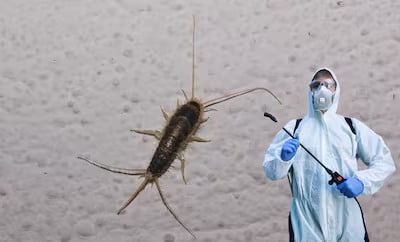
Silverfish are tiny insects that can become a big problem in any home. Even though they’re tiny, these persistent intruders can cause a lot of damage to your belongings and signal some pretty big problems in your home. We’ll look at why these critters are a cause for concern, how to spot them, and what you can do to keep them out of your space.
What Are Silverfish?
The INSAdes website says that silverfish, or Lepisma saccharina, are small insects, less than a centimeter long, with an elongated, wingless body. Their two long antennae and three bristles at the end of the abdomen, along with their metallic gray color, are what give them their nickname. They’re also called damp bugs or dust bugs, and these tiny invaders are masters of survival.
What Makes Them Dangerous?
While silverfish don’t sting or crawl into human ears, they’re still a bit of an annoyance. They don’t directly threaten people, but their ability to reproduce and their appearance make them unwelcome household guests.
They can be especially harmful to our belongings, contaminating food and destroying items like paper, fabric, and artwork. If these insects take up residence in your home, your clothes, books, and documents could suffer significant damage.
Lifespan and Reproduction
These insects live for about two to eight years, and they can go into hibernation during that time. Silverfish mature in about four months and molt eight times during their lifetime.
They reproduce quickly in the right conditions, like warmth and humidity. A single female can lay up to 100 eggs, which she hides in hard-to-reach places like crevices.
How to Spot and Prevent Silverfish
Spotting silverfish can be challenging due to their small size and nocturnal habits. However, finding their shed skins or seeing them scurrying away when you turn on the lights are clear indicators of their presence.
To prevent a silverfish infestation:
- Keep your home dry and well-ventilated. Silverfish thrive in moist environments, so reducing humidity is key.
- Seal cracks and crevices where they might hide or lay eggs.
- Store food in airtight containers and avoid leaving out crumbs or spills.
- Regularly clean and declutter your home, especially in storage areas where silverfish might find paper, fabric, or other materials to consume.
By understanding the risks posed by silverfish and taking proactive measures, you can protect your home and belongings from these persistent pests.

